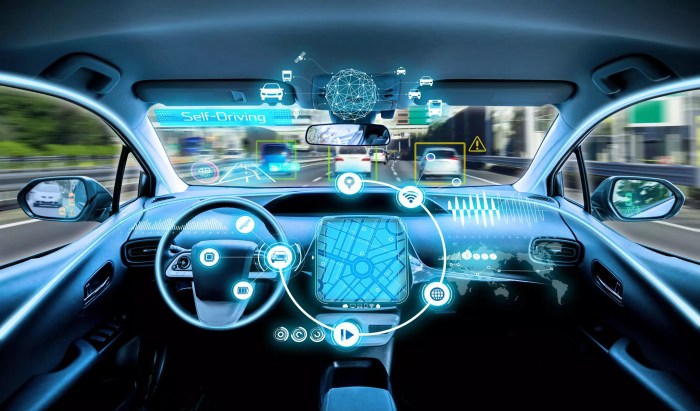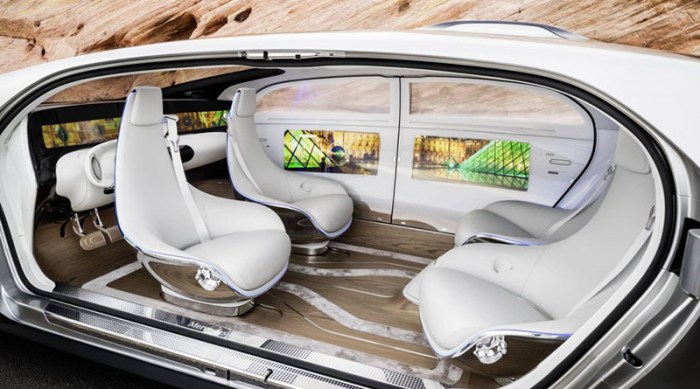Beyond Illumination
For decades, car headlights have served a singular purpose: to illuminate the road ahead, enhancing visibility for drivers during nighttime or challenging weather conditions. However, the future of car headlights is far more ambitious, venturing beyond simple illumination to encompass a range of functionalities that enhance safety, communication, and the overall driving experience.
Emerging Technologies Transforming Car Headlights
The traditional role of car headlights is being redefined by advancements in technology, transforming them into sophisticated multi-functional systems. These technologies are not only enhancing safety but also creating new possibilities for communication and driver assistance.
- Adaptive Headlights: These headlights adjust their beam pattern and intensity based on various factors like speed, steering angle, and surrounding traffic. By dynamically adjusting the beam, adaptive headlights improve visibility in curves and enhance safety by illuminating potential hazards more effectively.
- Laser Headlights: Laser headlights offer several advantages over traditional halogen or LED headlights. They produce a brighter and more focused beam, extending the illumination range significantly. This enhanced visibility allows drivers to react faster to potential hazards and navigate challenging road conditions with greater confidence.
- Matrix LED Headlights: Matrix LED headlights utilize individual LEDs that can be controlled independently. This allows for precise beam shaping, enabling the system to selectively illuminate specific areas while avoiding glare for oncoming traffic. The result is improved visibility and safety for both the driver and other road users.
Enhancing Safety with Advanced Headlights
The integration of advanced technologies into car headlights is significantly enhancing safety on the roads. These technologies are designed to improve visibility, reduce glare, and provide drivers with critical information to make informed decisions.
- Projection Headlights: Projection headlights utilize a projector system to project images onto the road ahead. This technology can be used to display warnings, navigation instructions, or even lane markings, enhancing driver awareness and reducing the risk of accidents.
- Headlight-Based Communication: Headlights can now communicate with other vehicles, pedestrians, and infrastructure. This communication can be used to warn drivers of potential hazards, signal lane changes, or even alert pedestrians to an approaching vehicle. This technology has the potential to revolutionize road safety by creating a more interconnected and aware driving environment.
- Night Vision Enhancement: Advanced headlights, combined with night vision cameras, can enhance visibility in low-light conditions. These systems can detect pedestrians, animals, and other objects that might be difficult to see in the dark, providing drivers with crucial information to avoid collisions.
Adaptive Lighting
Imagine driving at night, your headlights illuminating the road ahead but struggling to cut through the darkness in corners or when faced with oncoming traffic. Adaptive headlights are designed to solve this problem, providing enhanced visibility and safety by adjusting their beam patterns based on the surrounding environment.
Adaptive headlights use sophisticated sensors and actuators to dynamically adjust the direction and intensity of the light beam, ensuring optimal illumination for the driver while minimizing glare for oncoming drivers.
Adaptive Headlight Technologies
Adaptive headlights employ various technologies to achieve their dynamic illumination capabilities.
- Matrix LED Headlights: These headlights utilize an array of individual LEDs that can be individually controlled, allowing for precise beam shaping. They can create a high beam that illuminates the road ahead without blinding oncoming drivers by dimming specific LEDs in the direction of other vehicles.
- Laser Headlights: Laser headlights offer a more focused and intense light beam, providing greater visibility at higher speeds. They can also be adapted to provide a wider beam for better illumination in corners.
Communication and Information Display
Imagine a world where your car’s headlights not only illuminate the road but also communicate with you and other road users. This is the future of adaptive lighting, where headlights go beyond illumination and become a powerful tool for communication and information display.
Headlights as a Communication Tool, Car headlights of the future could do more than just illuminate
Headlights can be used to communicate with other vehicles, pedestrians, and infrastructure. For example, they can be programmed to flash in a specific pattern to warn drivers of an impending hazard, such as a stalled vehicle or a sudden change in road conditions. This can improve road safety by providing drivers with early warnings and allowing them to react accordingly.
“The potential for headlights to act as a communication tool is vast, and it could revolutionize how we interact with our vehicles and the environment around us.”
Displaying Information to the Driver
Headlights can also be used to display information directly to the driver. This could include navigation instructions, speed limits, or warnings about potential hazards. For example, the headlights could project a turn arrow onto the road ahead, guiding the driver to their destination. This can enhance the driver’s awareness and make driving safer and more efficient.
- Navigation: Headlights can project turn arrows or directional cues onto the road, providing real-time navigation guidance.
- Speed Limits: Headlights can display the current speed limit, helping drivers maintain safe speeds and avoid exceeding them.
- Warnings: Headlights can project warnings about potential hazards, such as blind spots, pedestrians, or obstacles.
Headlights and Autonomous Driving
The future of driving is autonomous, and advanced headlights are playing a crucial role in making this vision a reality. These intelligent lighting systems are no longer just about illuminating the road ahead; they are evolving into sophisticated sensors and communication tools, enabling self-driving cars to navigate the world with unprecedented precision and safety.
Headlights as Sensory Tools
Advanced headlights are equipped with a variety of sensors and technologies that enhance the capabilities of autonomous driving systems. These sensors allow the car to “see” its surroundings in greater detail, helping it make informed decisions about navigation, obstacle avoidance, and lane keeping.
- Laser-based LiDAR: This technology uses lasers to create a detailed 3D map of the environment, enabling the car to identify objects at a distance and in low-light conditions. This is particularly useful for detecting obstacles in the path of the vehicle, even in the presence of fog or rain.
- High-resolution cameras: Modern headlights often incorporate high-resolution cameras that provide a wide field of view, allowing the car to “see” what’s happening in front of it, as well as to the sides. These cameras are used for lane detection, traffic sign recognition, and pedestrian detection.
- Adaptive beam technology: This technology allows the headlights to adjust their beam pattern based on the driving conditions. For example, the headlights can automatically switch to high beam when there are no oncoming vehicles, providing better visibility in the dark. They can also dynamically adjust the beam to illuminate curves and corners, improving driver awareness and safety.
Aesthetic and Design Considerations: Car Headlights Of The Future Could Do More Than Just Illuminate
Car headlights have evolved from simple, functional units to become integral design elements, shaping the overall aesthetic appeal of vehicles. They are no longer just sources of illumination but serve as a visual signature, reflecting the brand’s identity and the car’s personality.
Design Trends in Headlights
The design of car headlights has been influenced by various factors, including technological advancements, evolving aesthetic preferences, and brand identities.
- Classic Round Headlights: These headlights, often associated with vintage cars, offer a timeless and nostalgic appeal. They are typically found on classic muscle cars, sports cars, and retro-inspired vehicles. The circular shape provides a sense of simplicity and elegance.
- Modern Rectangular Headlights: These headlights, commonly seen on contemporary vehicles, offer a more modern and streamlined look. They often feature sharp angles and geometric lines, emphasizing the car’s technological sophistication.
- Slanting Headlights: These headlights, characterized by their angled or sloping design, contribute to a sporty and aggressive appearance. They are frequently found on high-performance cars and SUVs, enhancing their dynamic and aggressive styling.
- LED Headlights: The adoption of LED technology has revolutionized headlight design. LEDs allow for greater design flexibility, enabling intricate shapes and patterns. They also offer superior illumination and energy efficiency, making them a popular choice for modern vehicles.
Integration of Technology and Design
The integration of technology and design has created visually striking and functional headlights.
- Adaptive Headlights: These headlights adjust their beam pattern based on road conditions and driving situations, enhancing safety and visibility. The technology behind adaptive headlights allows for intricate designs, such as integrated LED strips or dynamic lighting patterns.
- Laser Headlights: Laser headlights offer exceptional brightness and range, providing enhanced visibility in low-light conditions. Their compact size allows for more innovative design possibilities, enabling slim and futuristic headlight shapes.
- Digital Headlights: Digital headlights utilize micro-LED technology to create highly customizable lighting patterns. They can project information onto the road, such as navigation directions or warnings, adding an interactive element to the driving experience.
Car headlights of the future could do more than just illuminate – As technology continues to advance, the role of car headlights will continue to expand. They’ll become more than just lighting fixtures; they’ll become a crucial part of the driving experience, enhancing safety, communication, and even entertainment. The future of car headlights is bright, literally and figuratively, and we’re just beginning to see the potential of these innovative technologies.
Imagine car headlights that not only illuminate the road but also project images, creating a dynamic and interactive driving experience. It’s like a mini-movie playing out in front of your car, and you can even capture those fleeting moments with a Leica Sofort instant camera official , capturing the beauty of the future’s technological marvels.
 Standi Techno News
Standi Techno News

